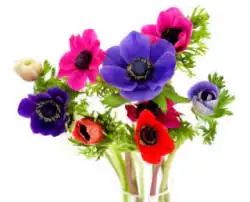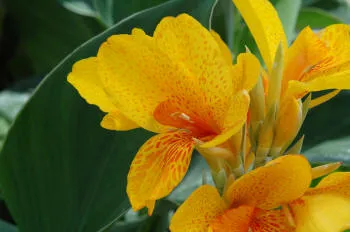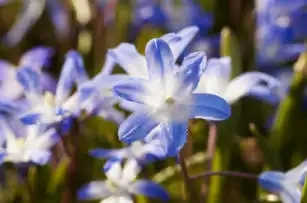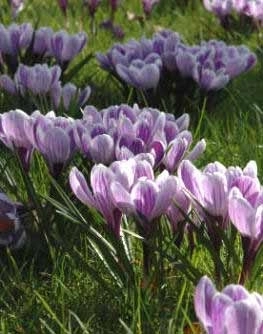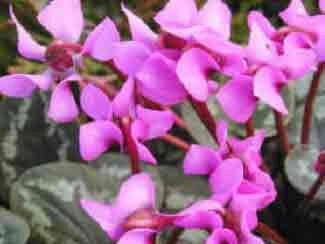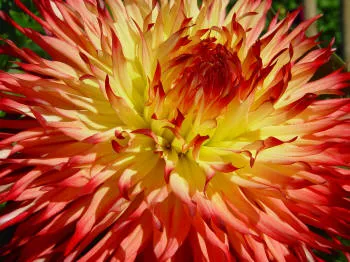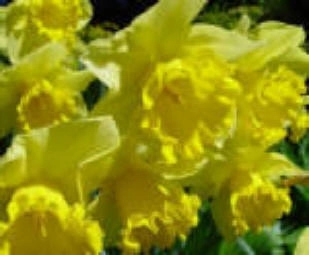Canna Lilies - as they are often called - are not true lilies. Cannas are produced from Rhizomes and are herbaceous perennials. Canna lily bulbs - as they are often wrongly called - die down each year and are stored for the winter in a dormant state - to be started back into growth the following spring.
They are classed as half hardy, so are not suited to leaving in the ground to overwinter - other than in the warmest countries, where they often grow as wild plants.
The Cannas get their common name from the fact that the seeds are hard - like pellets. As such, they were used as ammunition - stuffed down the barrels of musket rifles when lead shot pellets were scarce! The hard seed coats present a few problems in the propagation of Canna lily bulbs from seeds.

Yellow Gold Canna Lily
Cannas are spectacular garden plants - flowering from mid-summer through until the autumn. As well as a wide range of flower colours, there are several with coloured foliage - the large leaves being either bronze or striped.
Truly a tropical plant, cannas will add height and interest to a herbaceous border, or in a bed to themselves.
The flowers are produced at the top of the plant, atop the large leaves produced on a tall central stem. The foliage in itself is a feature, but it is the flowers that are the ultimate attraction.
The natural habitat of the Canna Lily bulbs, being moist areas in Asia and South America. In Thailand, they are often to be seen growing at the water's edge of streams. Many growers grow them in watertight containers - with a mud base, but totally submersed in water. In spite of their natural liking for damp conditions, they will survive - if not thrive - and any sunny area - dry or damp.
Cannas are often seen in public park's bedding schemes, used as central interest points. Most gardens that are open to the public now use Cannas extensively.
Cannas in Containers and Pots.
Cannas are quite happy to be grown in patio containers, but because of their eventual height - up to a metre or more - a large pot is necessary with plenty of weight to ensure that it is not toppled in windy conditions. The large leaves of the cannas literally act as sails, and as such, sometimes suffer a little 'shredding' in high winds.




